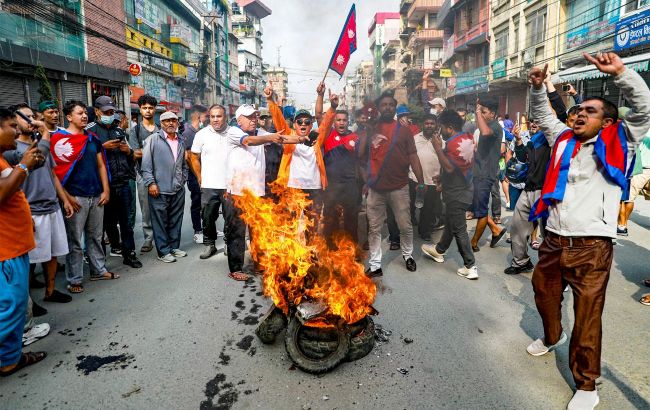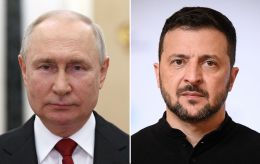Parliament on fire: Nepal faces largest political protests in years
 Photo: Nepal has been engulfed by mass protests (Getty Images)
Photo: Nepal has been engulfed by mass protests (Getty Images)
Mass protests have engulfed Nepal – demonstrators set fire to the parliament and the residences of politicians. The army deployed helicopters for the evacuation of government officials, and Prime Minister Khadga Prasad Sharma Oli announced his resignation.
RBC-Ukraine tells what is currently known about the mass protests and their consequences.
Escalation of protests
According to the media, against the background of the aggravation of the situation in Kathmandu, the Nepalese army is evacuating ministers from their residences. It is reported that five helicopters are used for transporting government officials to Tribhuvan International Airport, which has been closed for all flights. VIP persons were placed in the Maharajgunj military barracks.
Earlier, Prime Minister Sharma Oli appealed to the commander of the army, General Ashok Raj Sigdel, with a request to help keep the situation under control and ensure his safe exit from the residence.
However, the military advised the prime minister to resign, stating that stabilization is possible only after his resignation.
Storming of residences and arson
Protesters attacked the residences of the president, the prime minister, and several ministers. Participants of the riots also set fire to the house of the leader of the ruling party and president of the Nepali Congress, Sher Bahadur Deuba, destroying the cars that were inside.
The Supreme Court, the office of the Prosecutor General, and other municipal buildings were damaged. The arson of the country’s parliament became the biggest escalation – on social networks, footage is spreading with a huge flame and black smoke over the complex.
Also, demonstrators set fire to the Hilton Hotel in Kathmandu, which belongs to one of the leaders of the ruling party.
Tribhuvan International Airport was closed, and all flights were canceled against the background of the escalation of riots across the country.
Coordination of protests
According to local media, protesters are coordinating their actions through the platform Discord. In messages, they distribute instructions on making Molotov cocktails, damaging planes at the airport, and searching for ammunition in police stations.
Causes of protests
Protests in Nepal flared up due to dissatisfaction with the government’s corruption policy and the ban on social networks. Previously, YouTube, X, WhatsApp, Facebook, Instagram, and other platforms were blocked.
Although the authorities later canceled the ban and introduced a curfew in the capital, this did not stop the protesters.
During previous actions, at least 19 people were killed, and more than 100 were injured.
Sources: articles of India Today and Reuters.

